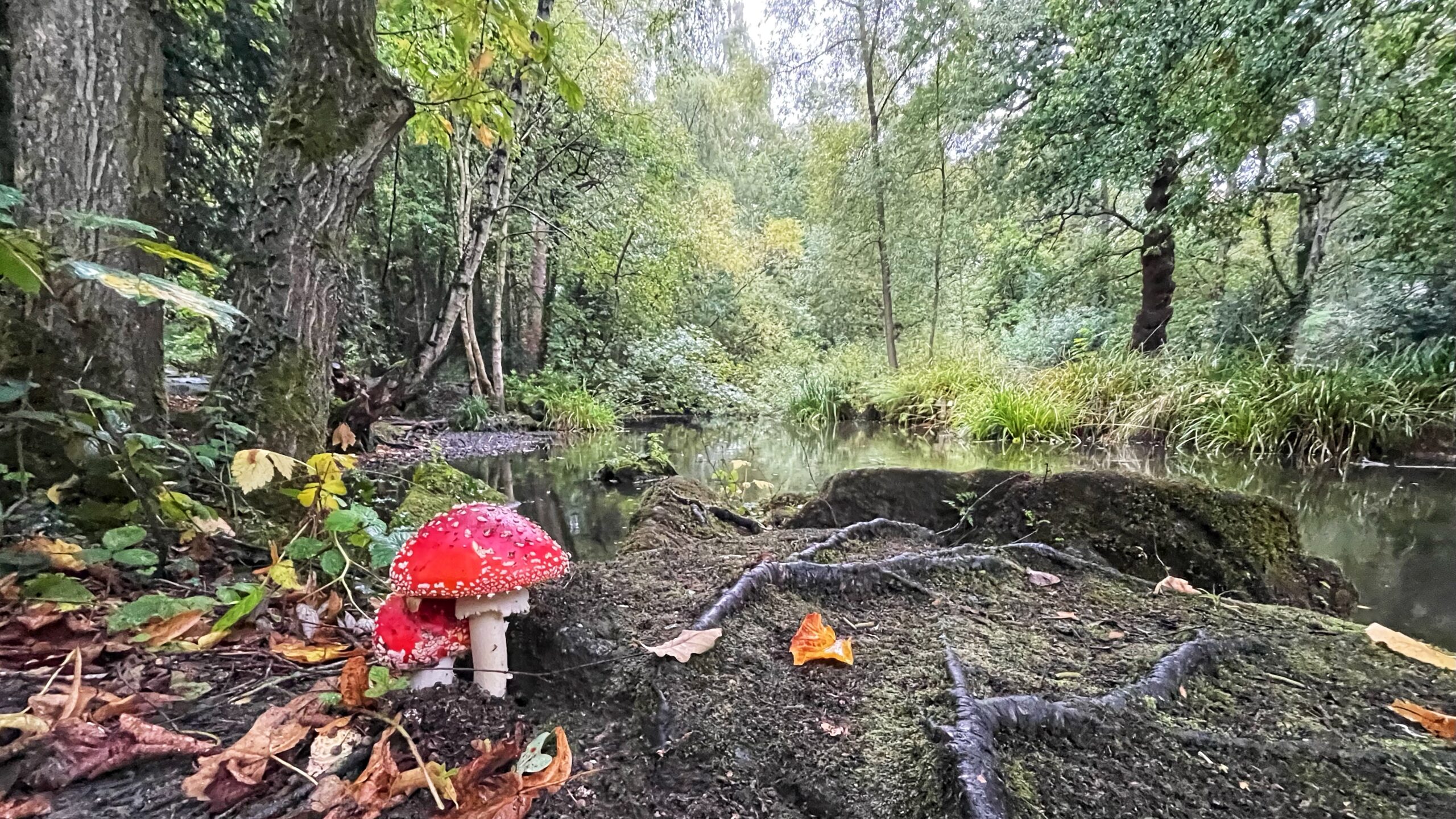Apparently Reindeer are known to seek out the Fly Agaric mushroom (Amanita muscaria), the red and white toadstool once used by Lapp shamans for its hallucinogenic effects. Midwinter rituals involved eating the fungus, falling into a deep sleep, and waking with unnaturally heightened strength and agility. The animals reacted in much the same way, fuelling myths of flying reindeer1“SANTA CLAUS, FLYING REINDEER, FLY AGARIC AND OTHER MYTHS…” VOICE OF THE MOORS, ISSUE 130 – WINTER 2017. The Magazine of the North York Moors Association..
When Christian missionaries reached Lapland, they absorbed rather than opposed these stories. From them grew the Christmas legend of Santa’s sleigh, with his red-and-white costume echoing the mushroom’s cap.
The practice was less romantic in daily life. Poorer Lapps collected urine from those who had eaten the mushroom, as it retained its active compounds. Reindeer ate the yellow snow too.
Unlike psilocybin, found in so-called “magic mushrooms” and now being trialled as a treatment for depression, Fly Agaric contains muscimol and ibotenic acid—unpredictable and sometimes toxic. That has not stopped unscrupulous online sellers promoting it as a “natural alternative.”2Davidson, Colin. 2024. ‘Interest Grows in Fly Agaric – but Here’s Why You Shouldn’t Confuse It with “Magic Mushrooms”’, The Conversation <https://theconversation.com/interest-grows-in-fly-agaric-but-heres-why-you-shouldnt-confuse-it-with-magic-mushrooms-233081> [accessed 4 July 2024]
This Fly Agaric is growing by Meanwood Beck in Leeds, near the former home of Captain Lawrence Oates, who gave his life on Scott’s Antarctic expedition in 1912 with the words, “I am going outside and may be some time.”
- 1“SANTA CLAUS, FLYING REINDEER, FLY AGARIC AND OTHER MYTHS…” VOICE OF THE MOORS, ISSUE 130 – WINTER 2017. The Magazine of the North York Moors Association.
- 2Davidson, Colin. 2024. ‘Interest Grows in Fly Agaric – but Here’s Why You Shouldn’t Confuse It with “Magic Mushrooms”’, The Conversation <https://theconversation.com/interest-grows-in-fly-agaric-but-heres-why-you-shouldnt-confuse-it-with-magic-mushrooms-233081> [accessed 4 July 2024]

Leave a Reply